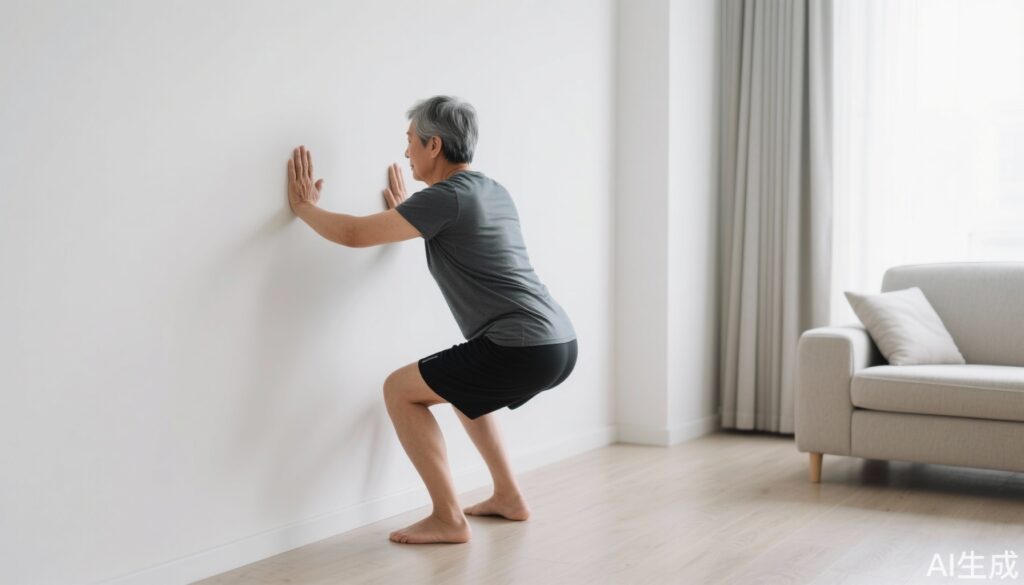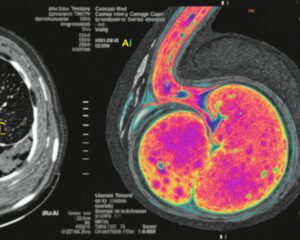Introduction
Many people yearn to exercise but claim they lack the time. However, a simple and effective exercise requires nothing more than a wall, and as little as ten minutes a day. Known as the “wall sit” or wall squat, this is a form of isometric exercise–a type of static muscle contraction that, unlike dynamic movements, does not change muscle length or move joints. Recent research highlights wall sits as among the most effective exercises for reducing blood pressure, along with other unexpected health benefits.
What Is the Wall Sit and Isometric Exercise?
Isometric exercises involve muscles contracting without visible movement or change in the joint angle. Examples include the wall sit, plank, horse stance, glute bridge, and heel raises. The wall sit requires you to slide your back down a wall into a sitting position with knees bent at approximately 90 degrees, holding that posture to engage major leg muscles.
Scientific and Clinical Evidence: Wall Sits Lower Blood Pressure Best
In 2023, a landmark study published in the British Journal of Sports Medicine analyzed 270 randomized controlled trials involving over 15,000 participants. The researchers compared different exercise modalities on their effects in lowering blood pressure:
| Exercise Type | Average Reduction in Systolic/Diastolic BP (mmHg) |
|———————————-|————————————————–|
| Isometric Training (wall sit, plank, horse stance) | 8.24 / 4.00 |
| Resistance Training (push-ups, squats, weightlifting) | 4.55 / 3.04 |
| Aerobic Exercise (walking, running, cycling) | 4.49 / 2.53 |
| High-Intensity Interval Training (burpees, jump rope) | 4.08 / 2.50 |
| Combined Aerobic + Resistance Training | 6.04 / 2.54 |
More strikingly, the wall sit, specifically, showed the highest blood pressure reduction, averaging 11.41 mmHg systolic and 5.09 mmHg diastolic decreases. This clarity invites reconsideration of exercise prescriptions, particularly for hypertension management.
Beyond Blood Pressure: Additional Health Benefits of Wall Sits
The wall sit offers a variety of benefits beyond blood pressure control.
1. Counteracting the Harms of Sedentary Lifestyle
Prolonged sitting can stiffen joints and weaken muscles. Performing wall sits or simply squatting after long periods of sitting can activate the lower body muscles, mobilize joints, ease lower back tension, and enhance balance and coordination.
2. Heart and Cardiovascular Health
Wall sits increase blood flow to the heart and lungs during the exercise, which can help reduce arterial stiffness and lower blood lipid levels. This process reduces risks for coronary artery disease and stroke. The increased chest expansion during the posture may further improve lung capacity and endurance.
3. Weight Management and Body Shaping
Wall sits burn fat and engage major muscle groups in the thighs, calves, hips, and abdomen. Targeted isometric training can improve muscle tone, enhance knee joint stability, and increase speed, power, and endurance – all aiding both weight loss and body sculpting.
4. Joint Lubrication and Mobility
By rhythmically folding and extending the lower limbs, wall sits help nourish joint tissues and surrounding structures, potentially lowering injury risk and alleviating pain from joint stiffness.
How to Perform an Effective and Safe Wall Sit
Proper technique maximizes benefits and minimizes risk:
– Stand with your back flat against the wall and feet shoulder-width apart, positioned about 1.5 feet away from the wall.
– Slowly slide down the wall until your knees bend to approximately 90 degrees, mimicking a sitting position, ensuring your core is engaged.
– Keep your feet pointing straight ahead. When viewed from above, ensure your knees align vertically with your feet (avoid toes pointing inward or outward).
– Hold the position for 1 to 3 minutes, progressively increasing to 3–5 sets daily.
If 90 degrees is too challenging, modify by maintaining the knee angle between 90 and 120 degrees, gradually progressing as strength improves.
Avoid sharp pain especially in the front of the knee during or after exercise; this indicates the exercise might not be suitable or that technique requires adjustment.
Case Study: John’s Experience with Wall Sits
John, a 58-year-old office worker with hypertension and a sedentary lifestyle, found it difficult to commit to gym sessions. On his physician’s advice, he began performing wall sits daily for 10 minutes, broken into several sets.
After 3 months, John’s blood pressure readings dropped from a consistent 145/90 mmHg to 130/85 mmHg. He also reported feeling more energetic, improved leg strength, and better balance. Importantly, John appreciated that the exercise required no equipment and easily fit into his daily routine.
Expert Recommendations and Insights
Dr. Emily Morgan, a cardiologist specializing in hypertension, remarks, “The emerging evidence on isometric exercises, such as wall sits, is compelling. This accessible form of exercise is particularly promising for patients who find traditional aerobic or resistance training difficult or impractical.”
The American Heart Association emphasizes regular physical activity for cardiovascular health but notes that isometric exercise can be a valuable addition, particularly in blood pressure regulation.
Conclusion
The wall sit, a simple isometric exercise requiring nothing but a wall, emerges as a potent tool for lowering blood pressure and augmenting overall health. Supported by robust clinical evidence, incorporating just 10 minutes of wall sits daily can significantly impact cardiovascular well-being, joint health, and body composition.
Its ease of practice and minimal time commitment make it an ideal choice for busy individuals and those with mobility issues. However, proper technique and listening to the body remain paramount to prevent injury.
Given these findings, healthcare providers should consider integrating isometric exercises like the wall sit into hypertension management and general wellness recommendations.
References
1. Inderjit Singh, Francois Paillard, et al. “Isometric Exercise and Blood Pressure: A Systematic Review and Meta-Analysis.” British Journal of Sports Medicine, 2023.
2. American Heart Association. “Physical Activity and Blood Pressure.” Accessed 2024.
3. Cornelissen VA, Smart NA. “Exercise Training for Blood Pressure: A Systematic Review and Meta-analysis.” Journal of the American Heart Association. 2013;2(1):e004473.
4. Coteur B, et al. “The Effects of Isometric Exercises on Hypertension: Research and Clinical Implications.” Current Hypertension Reports, 2022.
5. Bingxin Li, et al. “Benefits of Squat Exercises Related to Cardiovascular and Musculoskeletal Health.” Sports Medicine, 2021.



